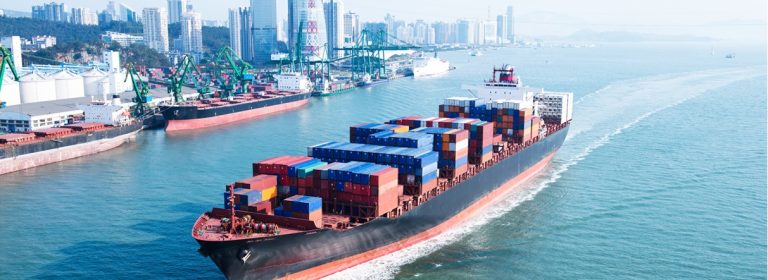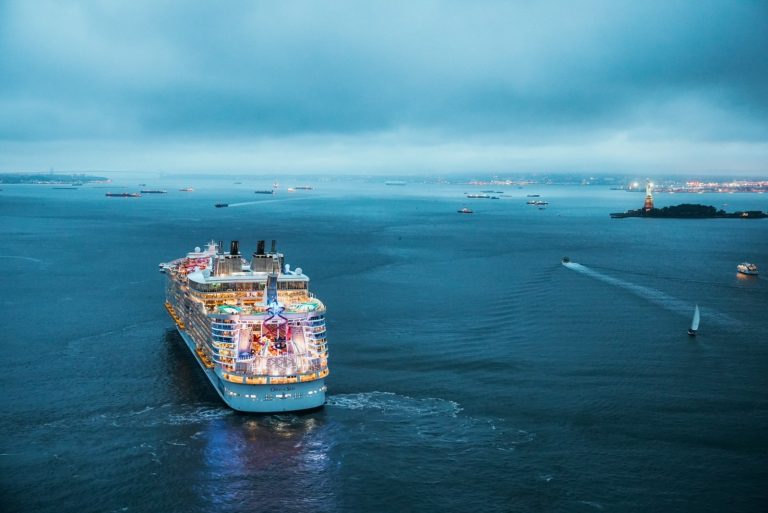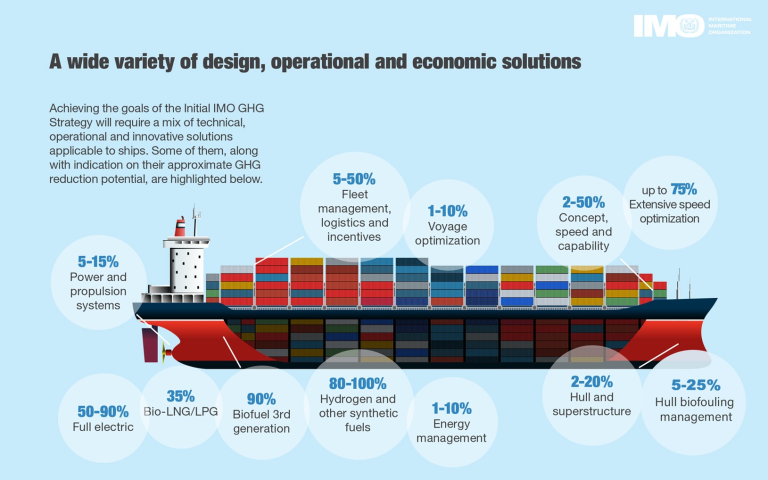Cruise Industry: Navigating a Greener Future
The cruise industry’s contributions to climate change may be relatively modest compared to other sectors such as shipping, but it’s still making strides toward sustainability. The pressure from eco-conscious consumers, combined with global net-zero goals and regulations, has prompted cruise liners to adopt cleaner practices to reduce maritime emissions. In this article, we’ll explore some of those solutions, demonstrating the cruise industry’s commitment to a greener future.
How Cruise Lines Reduce Maritime Emissions
Cruise lines have implemented various strategies to slash their greenhouse gas (GHG) emissions, such as:
Running on Liquefied Natural Gas
The maritime sector is faced with the challenge of meeting the International Maritime Organization’s (IMO) 2030 target to cut GHG emissions. As a response, cruise lines have traded conventional fuel sources for liquefied natural gas (LNG).
Although LNG is non-renewable, it’s the cleanest fossil fuel currently available. The adoption of LNG translates to a 20 percent reduction in GHG emissions, supporting the IMO’s sustainability goals.
It’s worth noting that not all cruise lines currently have the capability to run on LNG. However, new ships are being built with LNG-ready engines, which are easily adaptable for future integration with renewable fuels. The expectation is that the demand for LNG-ready vessels will grow exponentially to meet global GHG emission targets.
IMO
Zero emissioni CO2
Installing Air Lubrication Systems
On average, cruise ships use a staggering 250 tons of fuel each day, surpassing the lifetime fuel usage of most individuals. To reduce fuel dependence, cruise companies such as Royal Caribbean have incorporated Air Lubrication Systems (ALS) into their ships’ designs.
ALS operates by covering the cruise ship’s underbelly—also known as its hull—with microscopic bubbles. This significantly minimizes drag or resistance as the ship moves through the water, reducing the amount of fuel needed to propel it forward. It is estimated that ALS implementation can cut fuel consumption by up to 8 percent.
Plugging into Shoreside Electricity
Cruise ships spend several hours at ports to load supplies, disembark and embark passengers, and perform other vital activities. However, while docked, they need to stay powered on to maintain their functions, such as lighting, communication, and maintenance, resulting in continuous CO2 emissions.
Fortunately, as part of their shift towards sustainable terminal operations, port authorities now offer onshore power supplies (OPS). This provides cruise lines the option to switch off their engines while berthed without compromising their onboard operations. When paired with other strategies such as methane emission monitoring, this initiative ensures compliance with environmental policies for ports, while cutting carbon emissions by about 98 percent.
Royal Caribbean
Switching to LED Lighting
In a move toward energy efficiency, many cruise lines are outfitting their interiors with light-emitting diode (LED) lights. Though simple, this change has led to a significant reduction in emissions due to LED’s low-energy demand.
A noteworthy example is Costa Cruises, an Italian cruise line that partnered with Philips to outfit its fleets with over 300,000 LED lights. Beyond providing quality light that’s gentle to the eyes, LED options use 90 percent less energy and last 25 times longer than traditional bulbs.
Route Planning with the Assistance of AI
Cruise ships use artificial intelligence (AI) to increase fuel efficiency, particularly when it comes to route selection. AI tools can accurately analyze data from various sources, including sensors and weather reports, to assist cruise lines in planning their trips. This not only guarantees the selection of the safest routes, but also contributes to a significant reduction in carbon emissions. Choosing the most optimal routes allows cruise lines to reduce the overall distance covered, while easing water resistance and drag.
Design, operational and economic solutions IMO
Reducing Energy Waste Through Smart Systems
Historically, lighting has been a notable contributor to energy inefficiency on cruise ships, as they tend to stay on even when not in use. To tackle this challenge, cruise ship operators use smart control systems, which automatically lower artificial light levels when necessary. Additionally, these systems come with presence sensors, allowing them to power down lights in unoccupied spaces, such as in entertainment areas during the nighttime. This delivers a dual impact—reducing the vessel’s carbon footprint and contributing to cost savings.
Harnessing Waste Heat
A ship’s engine generates a significant amount of heat to propel it across the seas. However, only a portion of it is put to use, while the rest is dispersed into the air as “waste heat”.
In adopting climate-neutral practices, cruise lines have incorporated waste heat recovery (WHR) systems in their vessels. Through WHR, they can capture and repurpose the surplus of heat, reducing the ship’s dependence on traditional fuel sources. The recovered heat can then be used to support the ship’s various functions, such as heating the pool, providing guests with a steady hot water supply, and more.
Conclusion
Cruise lines worldwide are actively steering toward (pun intended) a greener future. Through these initiatives, they’ve significantly reduced their carbon footprint, aligning themselves with the industry’s larger goal of net-zero emissions.
Don’t miss more updates, news and reviews on Cruising Journal.




